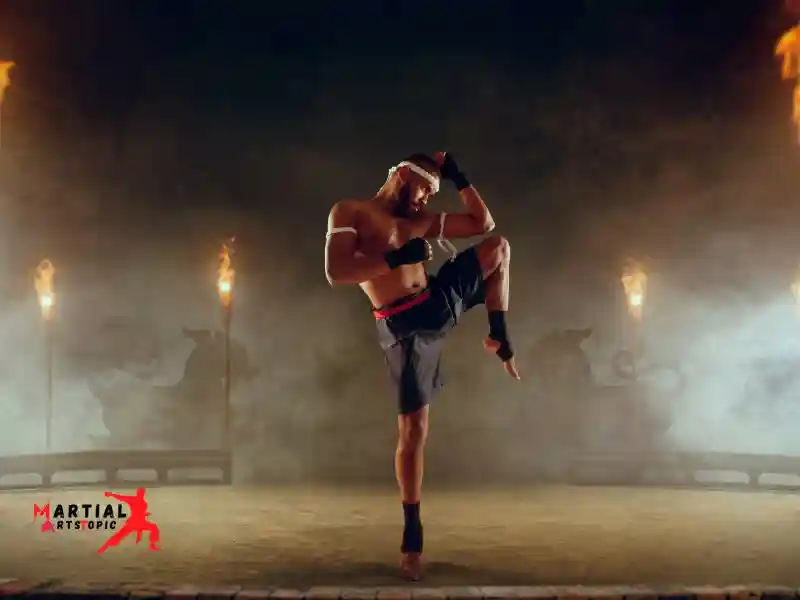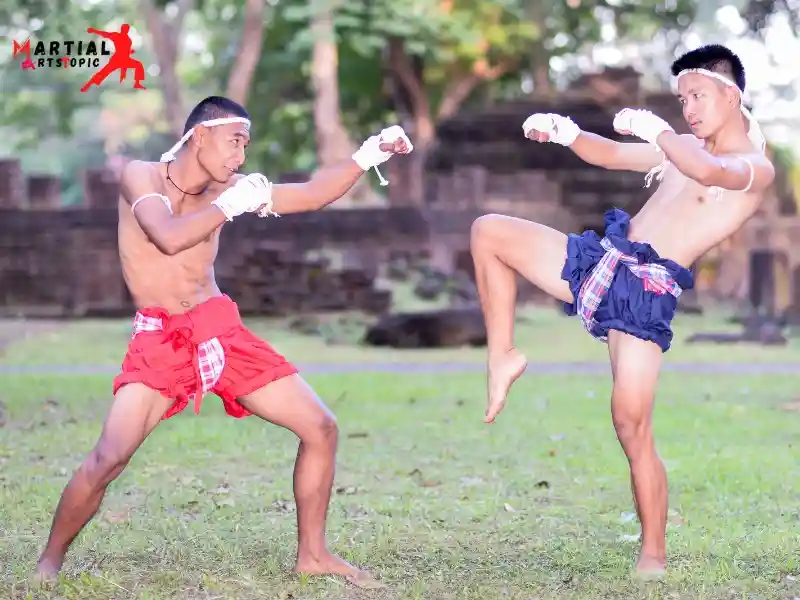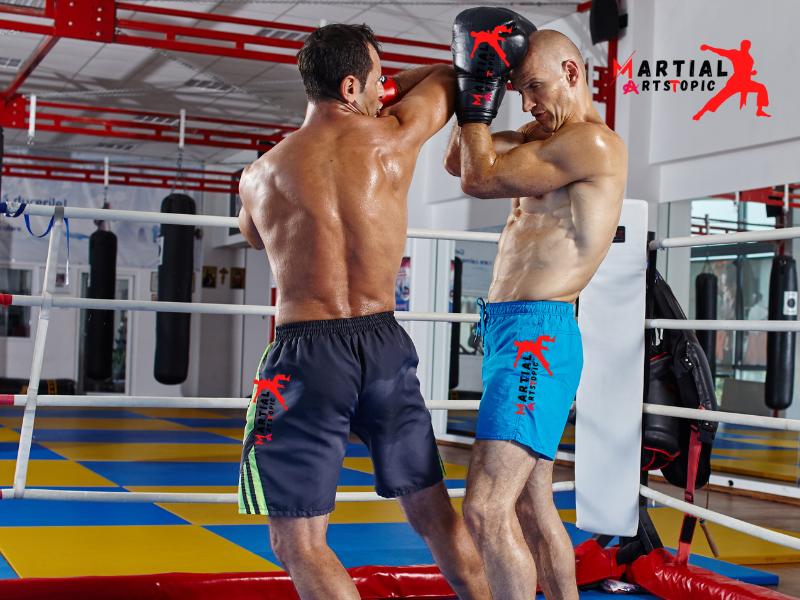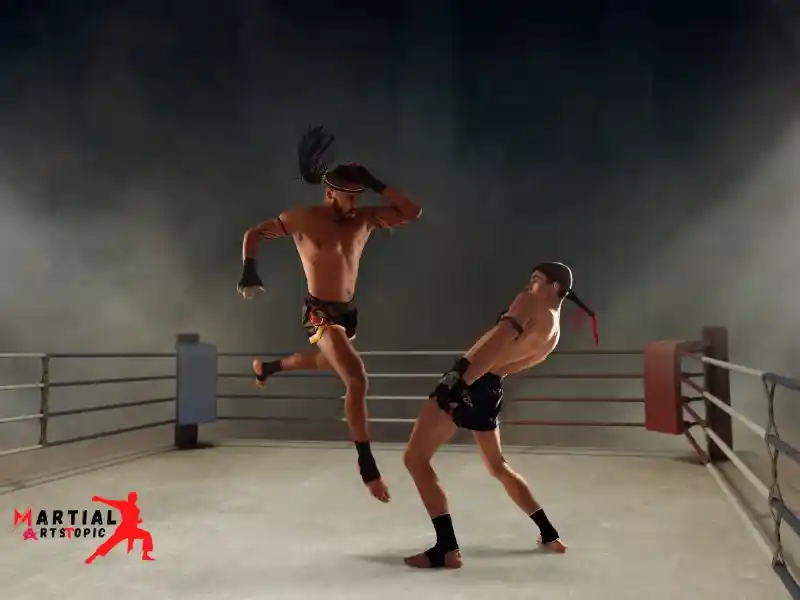
Unveiling the Ancient Power of Bokator
Unveiling the Ancient Power of Bokator: The Art of Cambodian Martial Arts. Embark on a journey to uncover the ancient and powerful art of Bokator, the traditional martial art of Cambodia. Bokator, with its roots deeply entrenched in Cambodian history, offers a holistic approach to combat and self-defense. This dynamic martial art encompasses an array of techniques, including striking, grappling, and weaponry, making it a comprehensive system for practitioners. Discover the rich cultural heritage and the profound significance of Bokator as we delve into its techniques, philosophies, and the enduring legacy it carries.
What is Bokator?
What is Bokator? Bokator, also known as Labokator, is an ancient Cambodian martial art that dates back over a thousand years. It is a complete fighting system that incorporates strikes, kicks, joint locks, and grappling techniques. Bokator practitioners also use a variety of traditional weapons, such as swords, staffs, and shields. The art emphasizes practical techniques for both armed and unarmed combat. Bokator is not only self-defense but also a way to preserve Cambodian culture and history. The training involves rigorous physical conditioning and mental discipline, making it a holistic practice for mind and body. Its intricate and diverse techniques make Bokator a unique and valuable martial art, with a rich tradition and history that continues to inspire practitioners around the world.
Origins and History
Bokator, an ancient martial art form, has a rich and fascinating history that centuries of cultural and historical influences have shaped. From its origins in Cambodia to its evolution and development over the years, Bokator has played a significant role in the martial arts world. Let’s delve into the origins and historical development of this traditional fighting style.
Origins of Bokator
The origins of Bokator can be traced back to the ancient Khmer Empire, which ruled over present-day Cambodia and parts of Thailand, Laos, and Vietnam. Bokator was originally developed as combat and self-defense by the Khmer warriors who sought to protect their kingdom from external threats. The martial art was deeply rooted in Khmer culture and was an integral part of military training and combat techniques.
Historical Development and Evolution

Over the centuries, Bokator underwent various transformations and adaptations, influenced by the political, social, and cultural changes in the region. Despite facing periods of decline and suppression, Bokator managed to survive and adapt, thanks to the dedication of its practitioners and the preservation efforts of Khmer masters.
The historical development of Bokator is also closely linked to its role in traditional Khmer rituals, ceremonies, and cultural performances. The martial art’s unique blend of combat techniques, animal-inspired movements, and weapon skills became an essential part of Khmer cultural heritage.
In recent years, efforts to revive and promote Bokator have gained momentum, with increased recognition and support from the Cambodian government and the global martial arts community. Today, Bokator is not only a symbol of Cambodia’s martial arts legacy but also a source of national pride and identity.
As Bokator continues to gain popularity and recognition on the international stage, it serves as a testament to the resilience and enduring legacy of traditional martial arts.
Understanding Bokator Techniques
When it comes to understanding Bokator techniques, there’s a rich and diverse range of skills to explore. From basic stances and footwork to hand-to-hand combat techniques and the weaponry used in Bokator, there’s a lot to delve into. Let’s inspect these fascinating aspects of this ancient martial art.
Basic Stances and Footwork in Bokator
One of the fundamental elements of Bokator is its emphasis on firm stances and precise footwork. The basic stances in Bokator provide a solid foundation for executing various techniques with power and control. These stances also facilitate fluid movement and balance, essential for both offensive and defensive strategies.
In Bokator, practitioners are trained to adopt a variety of stances, each serving a specific purpose. From the “Tiger Stance” to the “Crane Stance,” each position offers unique advantages in combat scenarios. Additionally, mastering footwork is crucial for maneuvering effectively within the fighting space, enabling practitioners to evade attacks and launch their own with finesse.
Hand-to-Hand Combat Techniques in Bokator

Bokator encompasses an extensive array of hand-to-hand combat techniques that are designed for both close-quarters combat and self-defense. These techniques include strikes, grappling, joint locks, and throws, all of which are executed with precision and efficiency. Practitioners are trained to utilize their entire body as a weapon, incorporating strikes from hands, elbows, knees, and feet.
What sets Bokator apart is its inclusion of animal-inspired movements, where combat techniques emulate the agility and ferocity of creatures such as tigers, snakes, and monkeys. This unique approach adds an element of fluidity and unpredictability to Bokator’s hand-to-hand combat, making it a truly dynamic martial art.
Weaponry Used in Bokator
Beyond hand-to-hand combat, Bokator also encompasses a range of traditional weaponry. These weapons, including staffs, swords, and shields, are integrated into the art form, reflecting the historical context in which Bokator originated. Each weapon requires specific skills and techniques, contributing to the holistic training of a Bokator practitioner.
The use of weaponry in Bokator not only hones the practitioner’s physical abilities but also instills a deep understanding of strategy and timing. It adds another layer of complexity to the art, offering practitioners a well-rounded skill set that extends beyond unarmed combat.
Training and Conditioning
Martial arts training and conditioning play a crucial role in developing a practitioner’s skills and abilities. Whether you are a beginner or an experienced martial artist, focusing on physical conditioning, mental discipline, and training routines is essential for improvement. In this blog, we will explore the key aspects of training and conditioning, focusing specifically on Bokator,
Physical Conditioning and Flexibility
Physical conditioning is a fundamental component of martial arts training. It encompasses strength, endurance, agility, and flexibility. In Bokator, physical conditioning is vital for executing the intricate movements and techniques inherent to this ancient Cambodian martial art. Incorporating exercises that build strength and improve flexibility in the muscles and joints is essential for practitioners to perform kicks, strikes, and defensive maneuvers with precision and power.
When it comes to flexibility, emphasizing the importance of dynamic stretching and mobility exercises can significantly contribute to a practitioner’s ability to execute Bokator techniques effectively. By targeting specific muscle groups and joints through tailored stretching routines, practitioners can enhance their overall performance and reduce the risk of injuries during training and sparring sessions.
Mental Discipline and Focus
Mental discipline and focus are equally important aspects of martial arts training. In Bokator, practitioners are encouraged to cultivate a mindset that emphasizes discipline, resilience, and unwavering focus. The mental aspects of training go beyond physical techniques, requiring practitioners to develop a deep understanding of strategy, timing, and situational awareness.
Incorporating meditation, visualization techniques, and mindfulness practices can aid practitioners in honing their mental discipline and focus. By training the mind to remain calm and focused during intense training sessions and combat scenarios, practitioners can elevate their overall performance in Bokator while fostering a sense of clarity and composure in challenging situations.
Training Routines and Drills
Effective training routines and drills are essential for mastering the techniques and principles of Bokator. Structured training sessions that encompass various aspects of the martial art, including striking combinations, defensive maneuvers, footwork drills, and sparring simulations, are crucial for skill development and practical application.
Incorporating repetitive drills that emphasize precision and fluidity in movement can aid practitioners in refining their techniques and building muscle memory. Additionally, integrating conditioning exercises such as bodyweight workouts, cardio routines, and resistance training can enhance overall physical preparedness and endurance, aligning with the demanding nature of Bokator training.
Benefits of Practicing Bokator
Bokator, an ancient Cambodian martial art, offers a myriad of benefits for those who practice it. From physical fitness and conditioning to mental development, Bokator has something to offer for everyone.
Physical Fitness and Conditioning through Bokator Training

One of the most prominent benefits of practicing Bokator is the unparalleled physical fitness and conditioning it offers. Bokator training encompasses a wide range of movements, from striking and grappling techniques to acrobatics and animal-inspired forms. Each aspect of Bokator training contributes to enhancing strength, agility, flexibility, and cardiovascular endurance.
The rigorous training involved in Bokator helps practitioners develop functional strength, which is essential for everyday activities and sports. Additionally, the repetitive practice of Bokator techniques promotes muscle memory, coordination, and overall body awareness. Whether you’re aiming to improve your overall fitness or seeking a dynamic workout that engages both body and mind, Bokator has you covered.
Mental and Spiritual Development from Practicing Bokator
Beyond its physical benefits, Bokator is a martial art that places great emphasis on spiritual development. The discipline and focus required to master Bokator techniques instill a sense of mental fortitude and resilience in practitioners. As a result, practitioners often experience improved concentration, discipline, and stress management skills in their daily lives.
Bokator’s deep-rooted connection to Cambodian culture and history provides practitioners with a unique opportunity for spiritual growth. The intricate symbolism and traditional rituals incorporated into Bokator training offer a profound sense of connection to the art’s heritage. This spiritual aspect of Bokator sets it apart as an enriching practice that goes beyond physical movements, fostering a sense of inner peace and cultural appreciation.
Real-Life Applications and Advantages of Learning Bokator
Besides its physical and mental benefits, Bokator equips practitioners with valuable real-life self-defense skills. The practical techniques and combat strategies taught in Bokator are derived from centuries-old fighting methods used by Cambodian warriors. From efficient striking and grappling techniques to weapon-based combat, Bokator covers a comprehensive range of self-defense tactics that can be applied in real-world scenarios.
The confidence and situational awareness cultivated through Bokator training empower practitioners to navigate challenging or potentially dangerous situations with composure and clarity. Whether it’s enhancing personal safety or honing practical combat skills, Bokator offers an invaluable arsenal of self-defense knowledge.
Bokator in Combat and Self-Defense
Bokator, one of the oldest martial arts in existence, is renowned for its practical applications in combat and self-defense. The techniques and principles that make Bokator an effective martial art for real-world situations, emphasizing its unique approach to self-defense and combat effectiveness. Additionally, we will compare Bokator with other martial arts to showcase its distinct advantages in various combat scenarios.
Bokator Techniques in Combat Situations

Bokator, often referred to as “the art of fighting like a lion,” encompasses an array of techniques that are tailored for combat effectiveness. From powerful strikes and devastating kicks to intricate grappling and submission holds, Bokator equips practitioners with a versatile skill set for engaging in combat situations. The utilization of elbows, knees, and various hand strikes makes Bokator a formidable martial art in close-range combat, while its emphasis on footwork and agility enables practitioners to maneuver with precision and speed.
In combat scenarios, Bokator techniques are applied with a focus on efficiency and adaptability. The art’s diverse repertoire of striking and grappling techniques allows practitioners to seamlessly transition between offensive and defensive maneuvers, providing them with the tools to respond effectively to dynamic combat situations. Whether engaging in stand-up exchanges or ground-based confrontations, the practicality of Bokator techniques shines through, making it a valuable asset for individuals seeking to enhance their combat proficiency.
Emphasizing the Practical Self-Defense Aspects of Bokator
Beyond its effectiveness in combat, Bokator places a strong emphasis on practical self-defense applications. The art’s self-defense techniques are rooted in real-world scenarios, equipping practitioners with the ability to defend themselves against various types of attacks. From mastering defensive maneuvers against strikes and grabs to learning how to neutralize threats in close-quarters encounters, Bokator empowers individuals to protect themselves in everyday situations.
The practical self-defense aspects of Bokator are further enhanced by its focus on mental and emotional preparedness. Practitioners are trained to remain composed under pressure, assess potential threats, and respond decisively when faced with danger. By cultivating a holistic approach to self-defense that encompasses both physical techniques and mental fortitude, Bokator equips individuals with the confidence and skills needed to navigate challenging situations with resilience and efficacy.
Comparison of Bokator with Other Martial Arts in Terms of Combat Effectiveness
When assessing the combat effectiveness of Bokator in comparison to other martial arts, several distinguishing factors come to light. Unlike some martial arts that may be tailored primarily for sport or competition, Bokator’s roots in ancient warfare and practical combat contribute to its distinct effectiveness in real-world confrontations. The art’s focus on utilizing natural body mechanics and exploiting vulnerabilities in an opponent’s structure sets it apart as a formidable combat system.
Bokator’s comprehensive approach to combat, encompassing both striking and grappling techniques, grants practitioners a well-rounded skill set that is adaptable to diverse combat scenarios. While other martial arts may excel in specific areas, such as striking or ground fighting, Bokator’s versatility and emphasis on practicality make it an interesting choice for individuals seeking a holistic martial arts system that prioritizes combat effectiveness.
FaQs
- What is Bokator?
Bokator is an ancient Cambodian martial art that dates back over a thousand years. It incorporates a wide range of techniques, including strikes, kicks, joint locks, and ground fighting. - What are the origins of Bokator?
Bokator has its roots in the ancient battlefield tactics of the Khmer Empire. It was originally used for self-defense and combat training. - What are the key principles of Bokator?
The key principles of Bokator include fluidity of movement, efficient use of energy, and a deep connection to Cambodian culture and history. - What are the benefits of practicing Bokator?
Practicing Bokator can improve physical fitness, flexibility, coordination, and mental focus. It also provides a way to connect with Cambodian heritage and traditions. - Is Bokator suitable for all ages and fitness levels?
Bokator can be adapted to accommodate individuals of varying ages and fitness levels. It offers a holistic approach to martial arts training, allowing practitioners to progress at their own pace. - Are there any spiritual or cultural aspects to Bokator?
Yes, Bokator incorporates traditional Cambodian music, dance, and spiritual elements. It is deeply intertwined with Cambodian folklore and mythology. - How can I find a Bokator instructor or school?
You can search for Bokator instructors or schools in your area through online directories, martial arts forums, or by contacting Cambodian cultural organizations. - What equipment is needed for Bokator training?
Bokator training typically requires minimal equipment, such as hand wraps, training uniforms, and protective gear for sparring and grappling. - Can Bokator be used for self-defense?
Yes, the techniques taught in Bokator can be applied for self-defense purposes. The art emphasizes effective combat techniques. - Is Bokator only practiced in Cambodia?
While Bokator has its origins in Cambodia, it is gaining international recognition and is practiced in various parts of the world.
Conclusion
What is Bokator? Bokator is a fascinating and ancient martial art that has deep roots in Cambodian culture and history. Its techniques are both practical and artistic, showcasing a unique blend of self-defense, physical conditioning, and cultural expression. The preservation and promotion of Bokator are essential for maintaining Cambodia’s rich heritage and ensuring that future generations can benefit from its teachings. Whether you’re interested in the history, physical benefits, or self-defense aspects, Bokator offers a wealth of knowledge and skills to explore. Embracing this martial art can not only enhance one’s physical fitness but also foster a deep appreciation for Cambodian culture and tradition.
